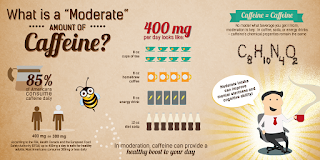All approximate caffeine
The content material on this Matter Evaluate used to be finally edited in Would possibly 2015. Papers within the Recent Analysis segment and extra tools are introduced ceaselessly.
Average caffeine intake, of around four hundred mg caffeine or the identical of as much as five cups of espresso consistent with a day, may also be loved as a part of a wholesome balanced nutrition and a lively lifestyle1. Average caffeine intake is related to a variety of fascinating physiological results, together with psychological and bodily efficiency.
Due to the fact espresso obviously accommodates caffeine, there's often a few confusion, even within the analysis literature, among the consequences of caffeine and the ones of espresso on well-being.
Espresso and Caffeine
Espresso has an extended historical past of intake. Espresso used to be found out around 1,000 years in the past within the area now referred to as Ethiopia. The primary espresso cargo to Europe used to be round 1615. Speedy expansion of well-liked espresso homes unfolds from the mid-seventeenth century as they become favorite assembly puts.
The espresso tree is a tropical evergreen shrub (genus Coffea), and beans are normally present in each and every ripe fruit, which resembles a pink cherry. A few 50 or so nations in Vital and Southern The united states, Africa and Asia develop espresso on a business foundation. The 2 so much not unusual species grown are types of Coffea canephora (robusta) and Coffea arabica (arabica).
Espresso is loved all over the world for its style and aroma but in addition for its delicate stimulant results on frame and thoughts. Caffeine has been smartly known as being the lively compound in espresso liable for this impact.
Chemistry of Caffeine
Caffeine belongs to the circle of relatives of heterocyclic compounds referred to as purines. It has the systematic identify three,7-dihydro-1,three,7-trimethyl-1H-purine-2,6-dione; it's often referred to as 1,three,7-trimethylxanthine, and 1,three,7-trimethyl-2,6-dioxopurine.
Caffeine may also be categorized as an alkaloid, a time period used for elements produced as finish merchandise of nitrogen metabolism in a few crops. The chemical components are C eight H 10 N four O 2. Caffeine has a molar mass of 194.19 grams (6.eighty five oz.). It's soluble in water and in lots of natural solvents, and it sounds as if in natural shape as white crystals. Caffeine may also be ready by way of extraction from herbal resources or through synthesis from uric acid.
More information: http://www.chicagomidwestbeautyshow.com
About Me
Popular Posts
-
DU HỌC MỸ HỌC BỔNG TOÀN PHẦN: ƯỚC MƠ TRONG TẦM TAY Du học Mỹ học bổng toàn phần luôn là niềm khát khao của các bạn sinh viên. Được đi...
-
Du học nước ngoài tại Mỹ trường Dallas Baptist University Bang Texas Giới thiệu chung Hệ thống du học Mỹ trường Dallas Baptist Universi...
-
Espresso has a clearly complicated botanical profile, with no less than 1,000 herbal compounds within the bean (together with caffeine) and ...
-
All approximate caffeine The content material on this Matter Evaluate used to be finally edited in Would possibly 2015. Papers within the R...
-
Espresso has lengthy been related to power and process – the legend of espresso’s starting place holds that it used to be found out as a re...
-
1. Cut the Pain Two cups of coffee can cut post-workout muscle pain by up to 48%. From the Journal of Pain, March 2007 2. Increas...
-
Davis Allen Cripe, a wholesome South Carolina youngster, downed a Mountain Dew, a restaurant late, and a power drink — after which died a...
-
1. Decreased Liver Most cancers Possibility: Researchers at USC Norris Complete Most cancers Middle discovered that those who eat 1-three c...
ADs
Labels Cloud
Labels List Numbered
Video of the day
Blog Archive
Powered by Blogger.






No comments:
Post a Comment
Thanks your comment